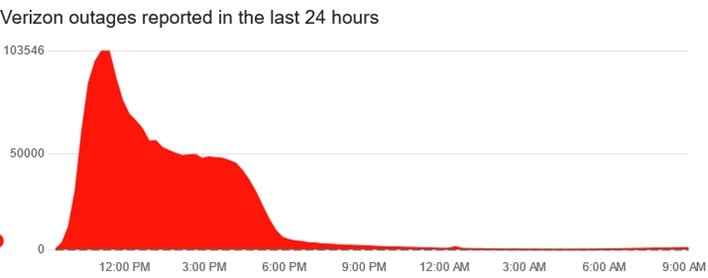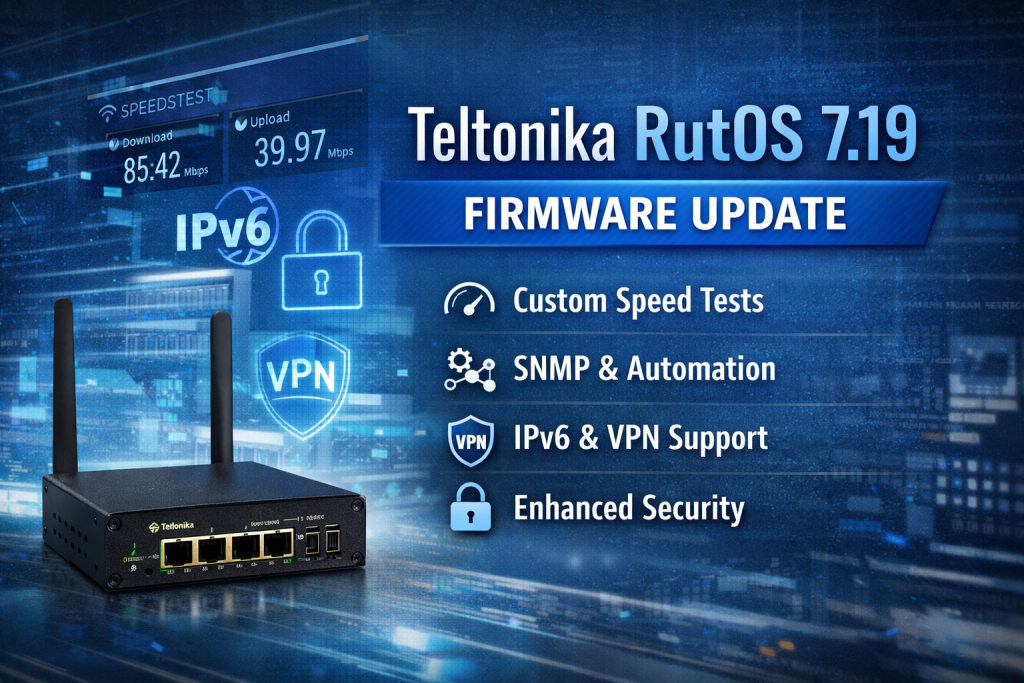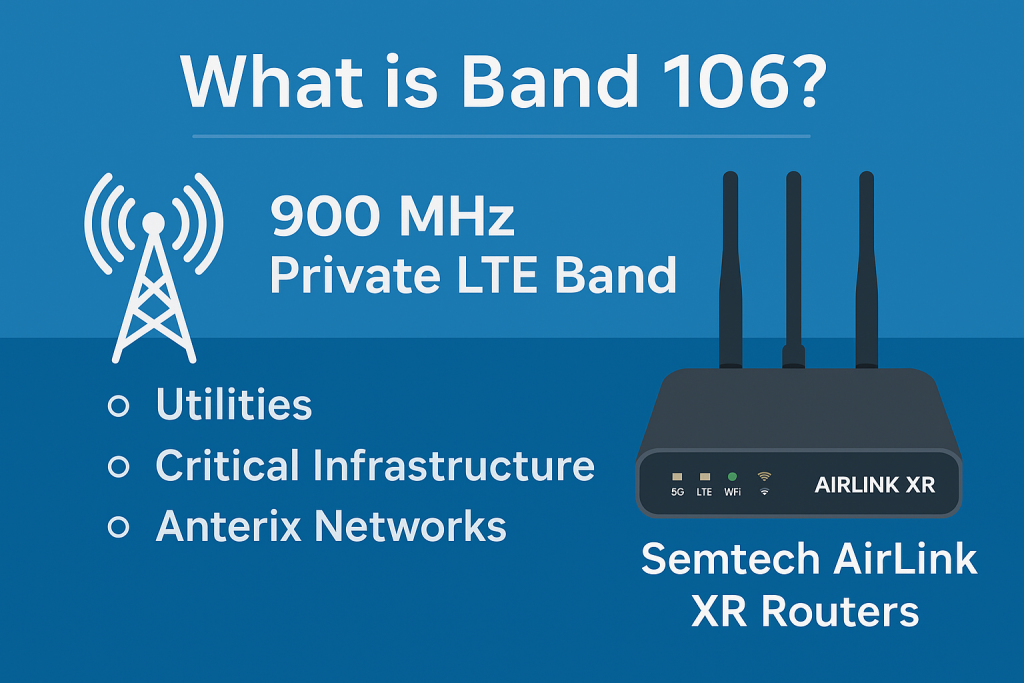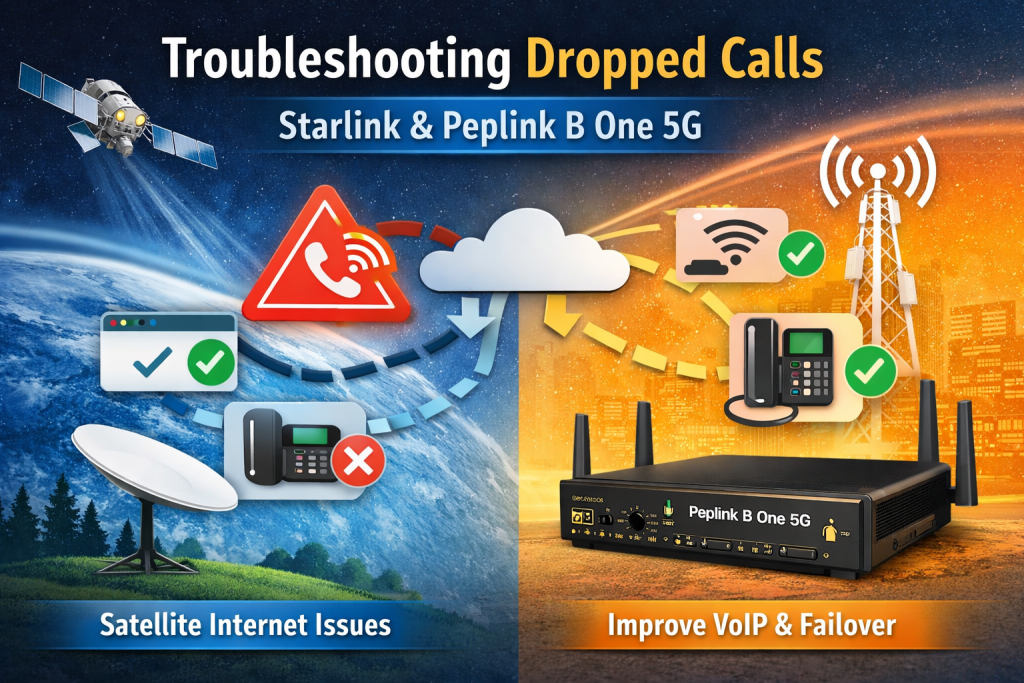Verizon Business Brings Advanced 5G Network Slicing to Enterprise Fixed Wireless Access Verizon Business has expanded its fixed wireless access (FWA) portfolio with a new offering that includes 5G network slicing for enterprise customers. This development moves wireless broadband beyond basic connectivity and closer to the performance expectations businesses have come to expect from wired services. Network […]
Verizon Outage 2026: Downdetector Data, What Happened, and What It Means
Verizon Outage 2026: What Downdetector Data Tells Us On January 14, 2026, Verizon experienced a widespread network outage that impacted customers across the United States. Users reported losing access to voice calls, text messaging, and mobile data, with many smartphones switching into SOS or emergency-only mode. This outage affected both consumers and businesses that rely on Verizon’s […]
Teltonika RutOS 7.19 Firmware Update: New Features, Improvements, and What It Means for Your Network
What’s New in the Teltonika RutOS 7.19 Firmware Update Keeping your router firmware up to date is one of the easiest ways to improve reliability, security, and overall network performance. The latest RutOS 7.19 firmware update from Teltonika Networks focuses on practical enhancements that make testing, automation, and day-to-day management easier for real-world deployments. From better speed testing and […]
Pepwave 5G Dongle Review: Driverless 5G Over USB That Works With Almost Anything
Key points Pepwave has a long history of making cellular connectivity feel “business-grade,” especially for Peplink routers and mobile deployments. The new Pepwave 5G Dongle continues that theme, but it does it in a way we do not see often: it is built to behave like a simple network adapter instead of a traditional modem. That one […]
Teltonika Expands Vilnius Manufacturing With New Factory
Teltonika Expands Again in Vilnius: A New Electronics Factory Planned in Liepkalnis Teltonika is continuing to grow its manufacturing footprint in Lithuania. A new electrical components factory is being planned in Vilnius, in the Liepkalnis area, as part of the next stage of the Teltonika High Tech Hill technology park. Quick takeaways What is being […]
What Is Band 106? 900 MHz Private LTE For Utilities, Anterix And Semtech AirLink XR Routers
What Is Band 106? The 900 MHz Private LTE Band Powering Modern Utilities Meta description:Band 106 is a 900 MHz private LTE and 5G band built for utilities and critical infrastructure, not consumer smartphones. Learn what it is, who it is for, and which manufacturers support it, including Semtech AirLink XR routers on Anterix networks. […]
2025 Top Products at 5Gstore
Every year, we publish one of our favorite roundups: the Top Products at 5Gstore. Customers ask for it, our team looks forward to it, and it is always a fun snapshot of what real-world connectivity looks like right now. This year, the list was harder than ever to build, and that is a good problem […]
5Gstore Custom Cable Manufacturing: Low Loss 240 and Ultra Low Loss 400
Custom Cable Manufacturing at 5Gstore: Built in the USA, Tested One by One, Ready for Real Deployments In this post you’ll learn: Featured build: 700 custom 30 ft cables for one customer We regularly support bulk, repeatable builds for enterprise and government deployments. A perfect example is the photo we’re featuring in this post: our team […]
ASUS Routers Compromised: Models Impacted and How to Check If Your Device Is Infected
Thousands of ASUS Routers Compromised. Here Is What You Need to Know and How to Check Your Device There is a major security alert circulating in the networking world right now. Thousands of ASUS routers have been compromised by a coordinated and highly targeted cyber campaign believed to be backed by a foreign government. At […]
Troubleshooting Dropped Calls with Starlink and Peplink Routers
Troubleshooting Dropped Calls with Starlink and Peplink B One 5G Overview Many remote homes, cabins, and temporary sites rely on Starlink for primary internet access and a Peplink B One 5G router for cellular backup. This combination works well for general browsing, streaming, and downloads, but some users experience dropped voice calls, poor VoIP quality, […]











